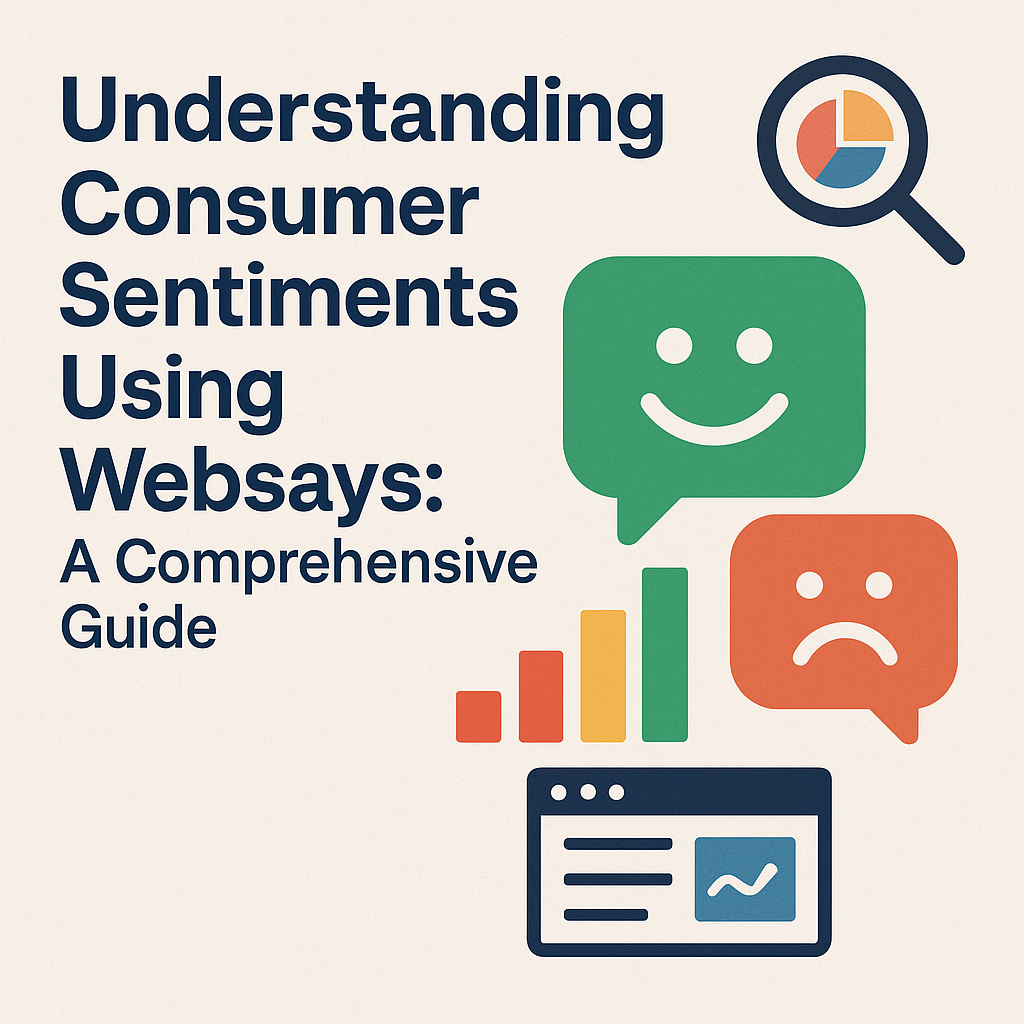Consumer sentiment is no longer just a marketing metric—it’s a strategic advantage. In today’s landscape, where brands are built (or broken) in comment sections, DMs, and duets, understanding how your audience feels is as important as knowing what they click.
That’s where Websays comes in. More than just a social listening tool, Websays is your full-stack sentiment intelligence engine. It captures the voice of your audience—across platforms, languages, and formats—and turns that into clear, actionable insights for growth.
Let’s break down how you can use Websays to decode sentiment and make smarter business decisions.
Why Sentiment Analysis Matters More Than Ever
Your customers are already telling you what they want. Not just in surveys, but in:
-
TikTok comment threads
-
Reddit debates
-
Instagram stories
-
YouTube reactions
-
Amazon reviews
The trick isn’t just hearing them. It’s understanding them.
Sentiment analysis goes beyond volume—it tells you the why behind the what. Why did a campaign flop? Why is that product going viral in Spain but not the U.S.? Why are people associating your brand with “cheap” or “innovative” or “cringe”?
Websays gives you those answers—fast, accurately, and at scale.
How Websays Does Sentiment Differently
Here’s how Websays helps you read the emotional pulse of your audience:
🔍 Smart Sentiment Detection
Websays uses AI-enhanced natural language processing to detect tone, emotion, and intent in real time. Whether it’s a rave review or subtle sarcasm, Websays decodes the nuance.
🌍 Multilingual & Multichannel
Sentiment data isn’t limited to English-speaking Twitter users. Websays supports hundreds of languages and covers platforms like TikTok, Instagram, Reddit, LinkedIn, blogs, and more—even news outlets.
🎯 Filters by Topic, Source & Geography
Want to know what people in Mexico think about your sustainability claims? Or how customers in the beauty space feel about your competitor? Drill down by topic, country, sentiment, and platform with precision.
📈 Sentiment Trends Over Time
Measure how public opinion evolves. See how a product launch shifts perception over days, weeks, or months—and tie those changes to marketing activity or external events.
⚠️ Real-Time Alerts on Sentiment Shifts
When sentiment spikes—or tanks—Websays notifies you instantly. Stay ahead of crises or capitalize on viral love before it cools off.
Real Use Cases: How Brands Leverage Websays Sentiment Analysis
→ Brand Health Monitoring
One consumer goods company used Websays to track positive vs. negative sentiment across product lines. They noticed a spike in negative mentions tied to packaging waste. Result? A new eco-friendly design, driven directly by consumer demand.
→ Campaign Optimization
A fintech app noticed low engagement in one of its video campaigns. Websays showed that sentiment around the word “fees” was overwhelmingly negative. They pivoted to highlight “no hidden fees” in the next campaign—and saw a 40% lift in conversions.
→ Crisis Prevention
A fashion brand caught a sentiment shift early when influencers began criticizing quality. They paused a product rollout, ran a quality check, and saved a potential PR nightmare.
Why Websays Beats Traditional Sentiment Tools
Most sentiment platforms offer generic dashboards and vague positive/neutral/negative scores. Websays goes further by offering:
-
Fully customizable dashboards (filterable by topic, keyword, channel, or location)
-
Human-readable data visualizations (not just charts, but stories)
-
Internal and client-ready reporting (built-in or exportable in seconds)
-
Ultra-fast implementation (live within hours, not weeks)
And unlike older tools, we’re constantly evolving—our AI improves as your queries become more complex.
Build with Emotion. Scale with Precision.
Understanding consumer sentiment isn’t about making guesses—it’s about making moves. With Websays, you go from listening to leading, using what people feel to shape what you build, launch, and say next.
So whether you’re a brand manager, PR strategist, market researcher, or startup founder—sentiment isn’t just a metric. It’s your edge.
